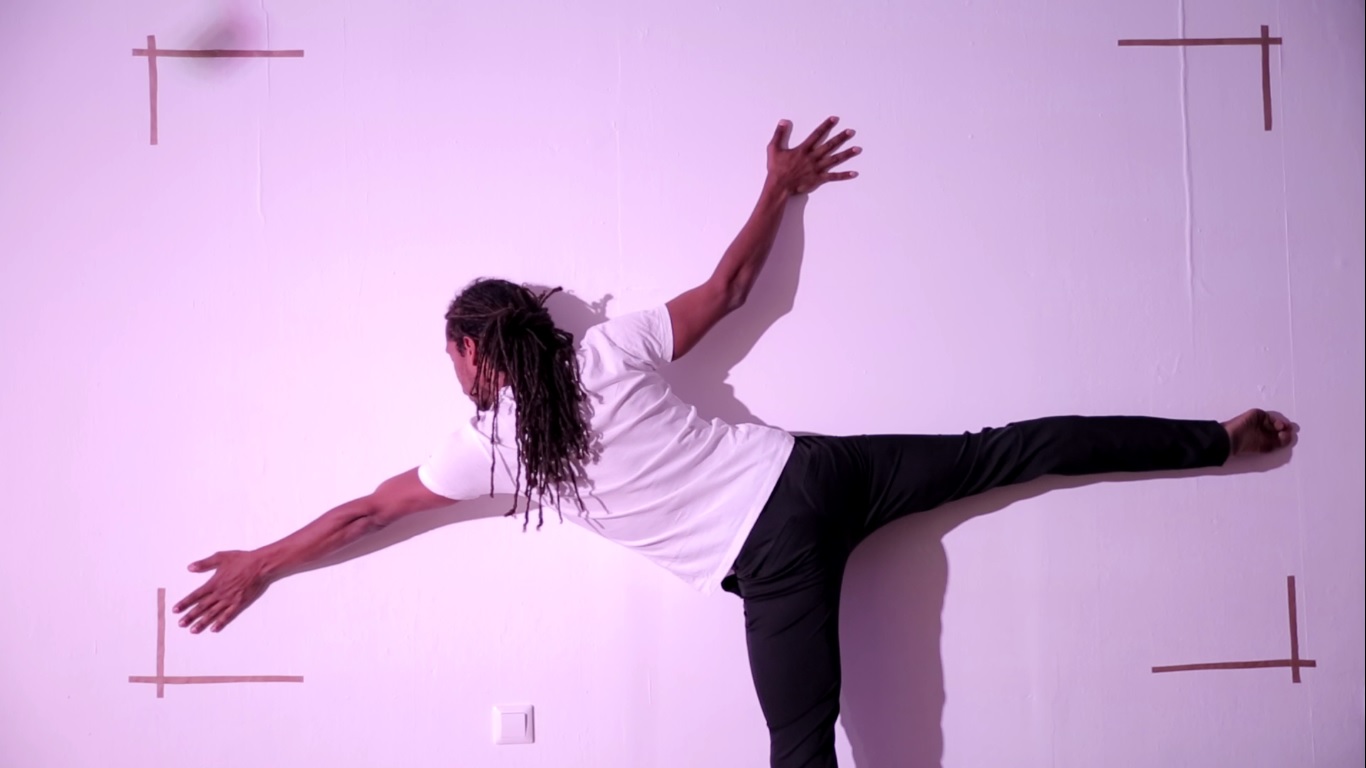Devised by the writer Maria A Ioannou and the dancer and choreographer Momo Sanno, the fourth CON TEXT event took place on 12th May. Sieglinde Geisel was there to report. Translated from German by Thomas Nießer.
The tale by Maria A Ioannou deals with a human, who would rather be a item, an object. When he is born he does not seem to breath, and as an adult he turns more and more into an object, in the end he can move his head only. A challenge for a dancer: how do you dance someone, who does not want to dance any more?
The discrepancy between consolidation and movement is a guiding theme of this encounter of two art forms. It is a give and take between language and dance. When words move, movements become frozen, when the writer falls silent, the dancer comes to life.
Momo Sanno lies on the floor, or to be more precise: he sits on a sideways toppled chair, as if he had become one with the piece of furniture.
“We have created a doll, a doll, a doll”, reads the author. The flow of words starts swinging, frees itself from the fixed text on the paper. Maria A Ioannou gives in to the rhythm, which is innate in her sentences, and she releases the words from their fixtures, so that they start dancing.
She has created Philip, this human who sees himself as an object. The dancer Momo Sanno explores this unusual figure with his body. It is, as if with his movements he felt himself into a state of consciousness: how might it feel if you want to be an object, made an object by someone else, to retreat into being an object? And how does one express this so that the audience can share in it?
There is only one conspicuous prop on the stage: a kind of cage with an upside-down table, with railings made of black tape, the whole thing lined with wrapping paper. There is a loud rustle when Philip weaves himself inside. It is only for a brief period of time, however, that he remains in the safety of his prison.
“Mum, touch me”, says the text, and Philip’s arms wind upwards. Hungry for love, they slide over and into one another – and this is precisely how they talk about the isolation, into which he renders himself again and again.
“Look, mum, I am a parking meter!” The dancer stands behind a pillar, on the white of the wall we see his dark-brown hands, as if they were detached from their body. “Look, how cool, cool, cool, how cool is that”, that’s how the words dance, while the fingers talk to us silently.

This performance in two voices is a voyage of discovery – for the artist as well as for the audience- which makes its own sense of the fusion of the two arts. Who is the dancer? Is it the figure of Philip, or is he Momo Sanno, who thinks about Philip, with the means of his body? Does Philip actually hear what is said about him in the text, or does he live in his own world? In Momo Sanno’s interpretation Philip can dance – at his best when speech falls silent: Sometimes it is as if words make him freeze. Without words he has the space, which he needs for his dance, then he stretches out his arms, expands the body and spins around in the room, in all directions.
“What does passion feel like?” As soon as feelings are talked about, all life, all life leaves him, the expressiveness, which had just captivated us, extinguishes from one moment to the next. As if the dance was something private, something that belonged just to him. “I like being used. I feel depressed when I am not used”– these sentences are a breach of taboo. Is he saying it to himself or is it a message, an appeal to us – and how could we comply with it?
“Do you see me?” is written underneath the strips of wrapping paper, which the dancer rips from the wall. He asks to be released from his sexuality – he was an ‘it’, which means, a thing. Is this a liberation from being human, from being a man or a woman? Do we have to imagine this Philip as a happy human being? Everyone can decide this for themselves.
The speech-dance duet is a dialectic work of art: a story of refusal and of desire, a parable, perhaps, of someone, who seems imprisoned in himself, who feels safe there and who does no longer wants to be close to humans. Momo Sanno made Philip happier than she had created him in her text, indicates Maria A Ioannou after the performance. In their work writer and the dancer pulled at opposing ends of the rope. This too, is a form of dance.

